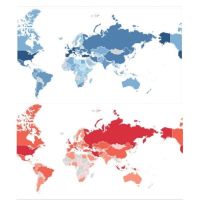According to a study published in the Canadian Medical Association Journal, a new tool can help clinicians assess hospital patients' risk of death within a year of admission.
The study was led by Carl van Walraven, a researcher at the Ottawa Hospital and the University of Ottawa, Ontario. He analysed eight years of data for patients that were admitted to hospitals in both Ontario and Alberta and to Brigham and Women's Hospital in Boston. The subjects from Alberta were younger while those from Boston suffered from more chronic illnesses.
The goal was to determine the accuracy of the hospital-patient-one-year mortality risk (HOMR) model. The HOMR model incorporates age, sex, living status, number and severity of illnesses and number and type of admissions.
Van Walvaren's analysis indicated an 8.7 percent risk of death within a year of admission. While substantial variation was found in results based on patient characteristics, overall the HOMR model was able to predict the risk of one-year mortality quite accurately.
"The HOMR score can be used with confidence to predict the risk of death within one year after admission using health administrative data," van Walraven and his team said in a statement, adding that further study is needed to determine the model's effectiveness in frontline, routine-care settings.
Source: Canadian Medical Association Journal
Image Credit: Wikimedia Commons
References:
Walvaren, Carl van et al. (2015) External validation of the Hospital-patient One-year Mortality Risk (HOMR) model for predicting death within 1 year after hospital admission. CMAJ. doi: 10.1503/cmaj.150209



























